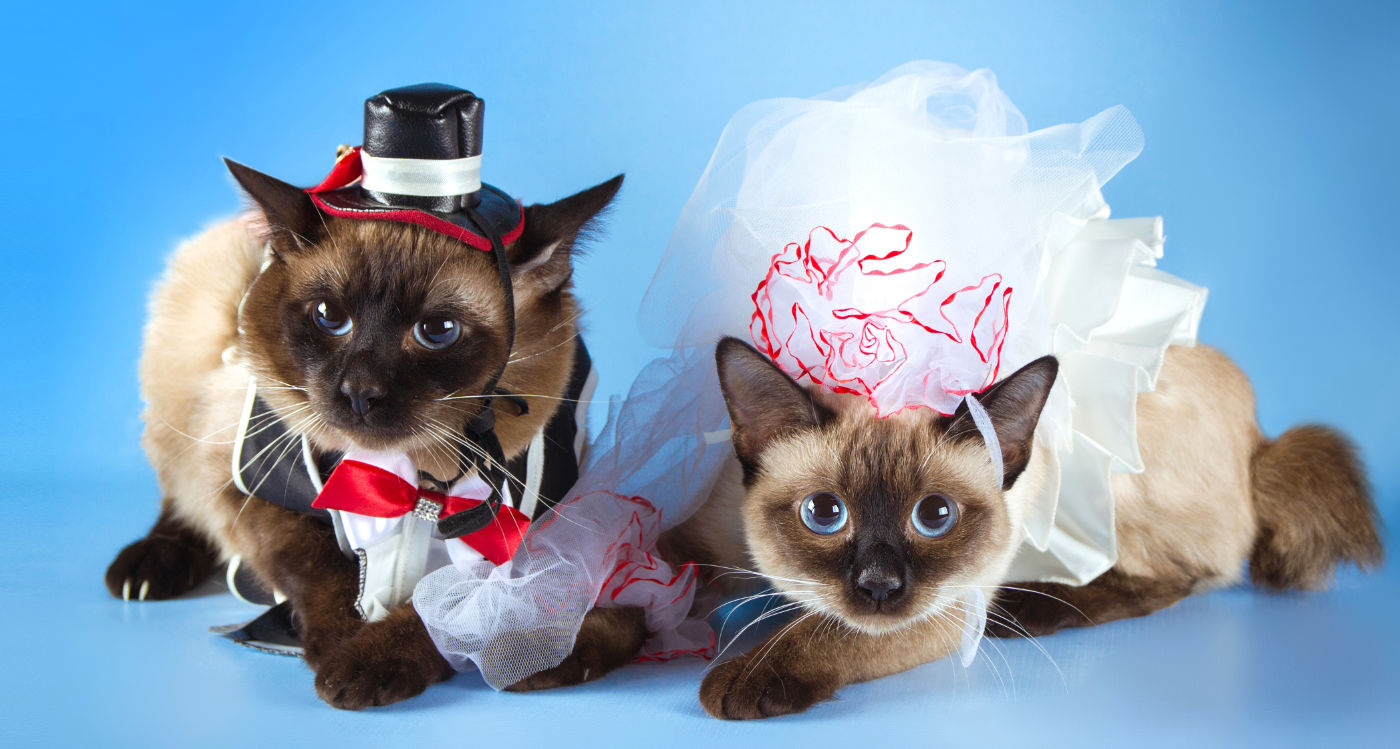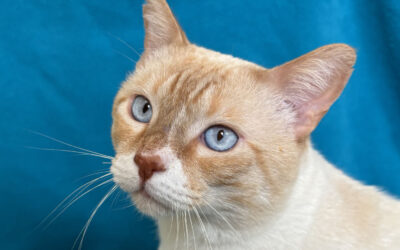Dear Ms Kitty,
I see all these adorable costumes for pets in my local pet supply store, but when I try to put a costume on my cat Frodo, he acts like I’m trying to kill him. Why can’t he just go along with it like my dog Bilbo does?
Costumed in Castle Rock
Dear Costumed,
Happy Halloween! Cat (and dog) costumes are big business these days. In 2020 an estimated 25% of all cat guardians (40% for dogs) bought clothing for their cat, and those sales are only expected to increase.
Let’s chat with Frodo for a minute. Cat body language is subtle but most cat people know happy cats when they see them: tails and ears are up, eyes are relaxed, whiskers are forward.
But what happens when you put a costume on him? Does he stay relaxed and vogue about with his costume swishing like Rover the Cat on Instagram? Or is his reaction something else?

Some cats can be conditioned as kittens to enjoy—or at least tolerate–wearing clothes, just like some cats can enjoy going on hikes with their humans as Adventurecats. However…
Not all cats can tolerate costumes. We may be going out on a limb here but we are guessing it’s fewer than 5%.
Cats are not created to wear clothing. When something is placed on their backs, they may fight, freeze or flee…just as if they had been caught by a predator. Which in fact they have, as the two main predators of cats are humans and dogs.
Research at the University of Montreal into feline pain has produced a very simple way to tell if your cat is in pain called the Feline Grimace Scale (FGS). We propose this same scale can tell you if your cat is in emotional distress.

Happy cats will have perky ears and tails, relaxed eyes, relaxed and rounded muzzles and neutral or forward whiskers, like Happy Cat Scout.

Unhappy cats will have flattened ears, tucked tails, squinted eyes, tense muzzles, whiskers pulled in and often tucked tails like this Sphynx at a cat show.

Very unhappy cats will try to escape their predators altogether. They may also have dilated pupils, though this can also indicate excitement or low light, and may lick their lips, if not connected to food.
Within reason as their guardians, Happy Cats Haven advocates for giving cats choices and asking for permission when handling We teach how to find their line of consent by listening to their body language.
Social media gives us lots of opportunity to study cat consent. We’ve created overlays of the three FGS profiles. The green one is low stress, the yellow one is moderate and the high stress one is red.

Our featured photo shows two catolescents, one with hat and clothes and one with just clothes: high and moderate stress.


A single cat in full cow costume with hat, ears confined, eyes squinting, whiskers back: high stress.


Here’s another pair of cats in clothing and hats, even more confining than the previous pair. You can see the moderate and high stress in their flattened ears and whiskers, squinted eyes and frozen postures.


This cat is at home with a confining hat. The slightly squinty eyes and tense whiskers show moderate stress.


This is another cat at a cat show. It’s trying to evade the predator, showing high stress with flat ears, squinted eyes and stiff, stressed whiskers.


This is a common animal costume. The cat has flat ears, flat whiskers and squinty eyes showing moderate stress.

They aren’t all at the red end of the scale. Here are some cats who aren’t stressed at all, including our Acrocat friend Jax on the skull and Rover the Cat on his catwalk.

Jax is one of friend Samantha Martin’s Amazing Acrocats. She has been trained since a kitten to tolerate low-stress costumes and you can see she loves every minute of it.


This costume is no different from a front facing walking jacket. Cats still need to be desensitized to wearing one but can be relatively comfortable in this costume.


Rover the cat was conditioned for walking jackets as an Adventurecat for two years before his guardian Angelina started making custom catwalk fashion for him. Even so, they are mostly collars and capes. She says, “We don’t use outfits that would cause any kind of stress.” The Feline Grimace Scale proves that’s true.

Of course not all costumes are equal. The least invasive costume, according to what the cats are telling us, is one that drapes over the back for cats who have already been conditioned to wear a harness or walking jacket.
Collar type costumes like bandanas, capes or ties are also similar enough to collars that cats conditioned to collars may be able to adapt, like Rover.
But hats for cats? Cats rely on their hearing to help them feel safe. When a cat is put into a hat that flattens his ears and tightens around his neck, he is trapped into a very vulnerable state of stress.

Paws down, the costume that gets the award for most abusive is the full-body costume, especially one that’s tight. This extends the problems with hats onto their whole body.
They can’t move, they can’t hear and often can’t see. They are being forced into immobility, exactly like being caught by a predator right before they are eaten.

This guardian is in a special category. Her kitten is trussed up in full body costume, paw tied to a basket, screaming for help, and the guardian is amused by the kitten’s terror.
This is the definition of abuse. If a human is driven to force something into clothing and costumes, at least have the decency to find an inanimate object like a doll that doesn’t need to consent.
Here’s a parting thought if you’re still intent on spending money to stress out your cat: consider sustainability. The clothing industry produces up to 10% of global emissions and is the second largest consumer of water.
Only 15% of used clothing for humans is recycled per year. The rest goes to clogging our landfills.
Adding billions of pet costumes that are unlikely to be worn again to the 11 million tons of textile waste is not doing anyone except the pet supply industry any favors. Especially not most cats!

Sara Ferguson is the Director of Happy Cats Haven, a low stress shelter whose goal is every cat a happy cat.




